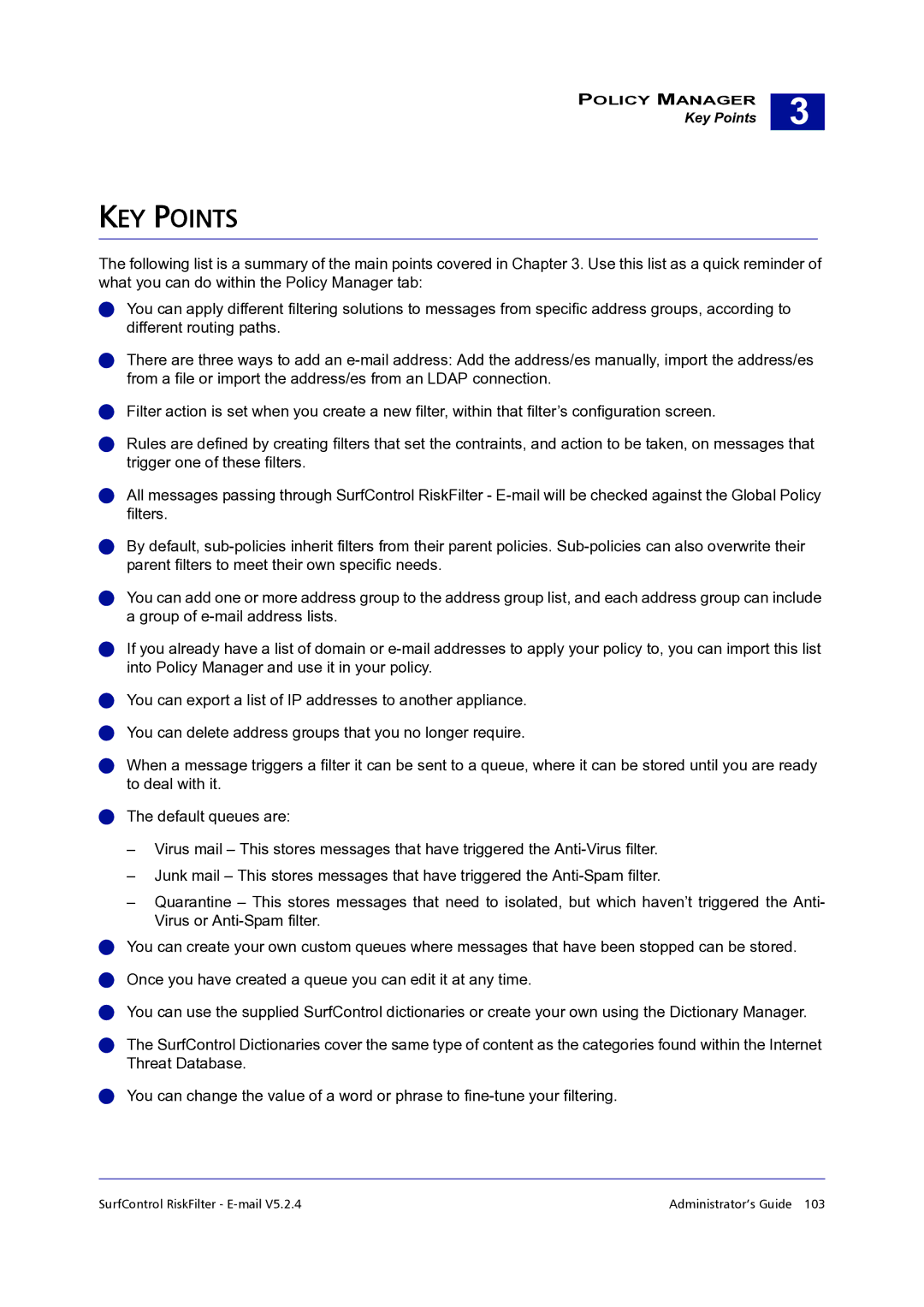
POLICY MANAGER
Key Points
3 |
KEY POINTS
The following list is a summary of the main points covered in Chapter 3. Use this list as a quick reminder of what you can do within the Policy Manager tab:
You can apply different filtering solutions to messages from specific address groups, according to different routing paths.
There are three ways to add an
Filter action is set when you create a new filter, within that filter’s configuration screen.
Rules are defined by creating filters that set the contraints, and action to be taken, on messages that trigger one of these filters.
All messages passing through SurfControl RiskFilter -
By default,
You can add one or more address group to the address group list, and each address group can include a group of
If you already have a list of domain or
You can export a list of IP addresses to another appliance.
You can delete address groups that you no longer require.
When a message triggers a filter it can be sent to a queue, where it can be stored until you are ready to deal with it.
The default queues are:
–Virus mail – This stores messages that have triggered the
–Junk mail – This stores messages that have triggered the
–Quarantine – This stores messages that need to isolated, but which haven’t triggered the Anti- Virus or
You can create your own custom queues where messages that have been stopped can be stored.
Once you have created a queue you can edit it at any time.
You can use the supplied SurfControl dictionaries or create your own using the Dictionary Manager.
The SurfControl Dictionaries cover the same type of content as the categories found within the Internet Threat Database.
You can change the value of a word or phrase to
SurfControl RiskFilter - | Administrator’s Guide 103 |
